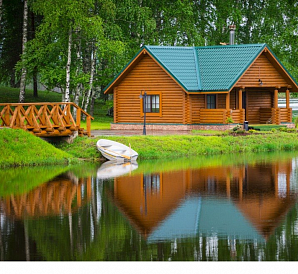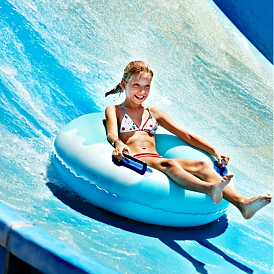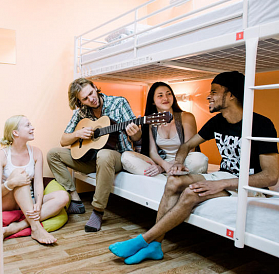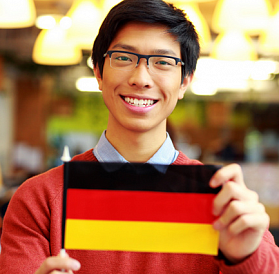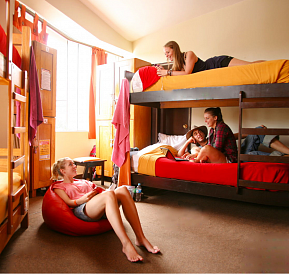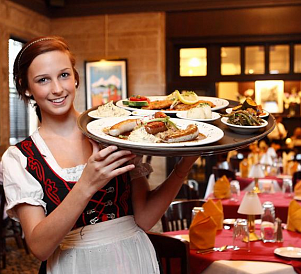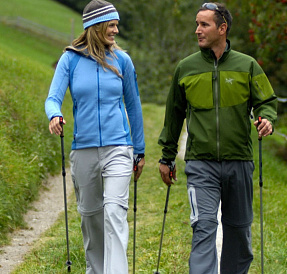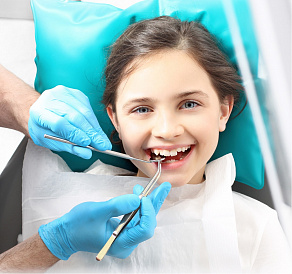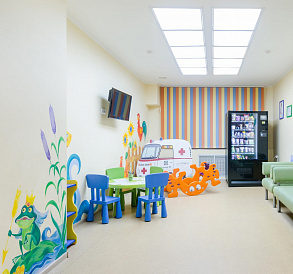15 of the most beautiful castles in Germany
The number of castle structures in Germany is close to three tens of thousands. Of course, not all of them have retained their original (or at least reconstructed) appearance. Most of the time turned into ruins. But there are many surviving castles in Germany. Among them are fantastically beautiful and truly unique, and with an exciting story worthy of description in artistic novels. Therefore, when traveling in Germany, you should definitely make time to get acquainted with local castles. And our rating will help determine which castle buildings are preferable to visit.
Rating of the best castles in Germany
| Nomination | a place | name of the castle | rating |
| Rating of the best castles in Germany | 1 | Neuschwanstein | 4.9 |
| 2 | Eltz | 4.9 | |
| 3 | Wartburg | 4.8 | |
| 4 | Hohenzollern | 4.8 | |
| 5 | Stolzenfels | 4.8 | |
| 6 | Drachenburg castle | 4.7 | |
| 7 | Schwerin Castle | 4.7 | |
| 8 | Bloom | 4.7 | |
| 9 | Moritzburg | 4.7 | |
| 10 | Königstein | 4.6 | |
| 11 | Marksburg | 4.6 | |
| 12 | Cochem | 4.6 | |
| 13 | Albrechtsburg | 4.5 | |
| 14 | Kriebstein | 4.5 | |
| 15 | Harburg | 4.5 |
Neuschwanstein
Rating: 4.9
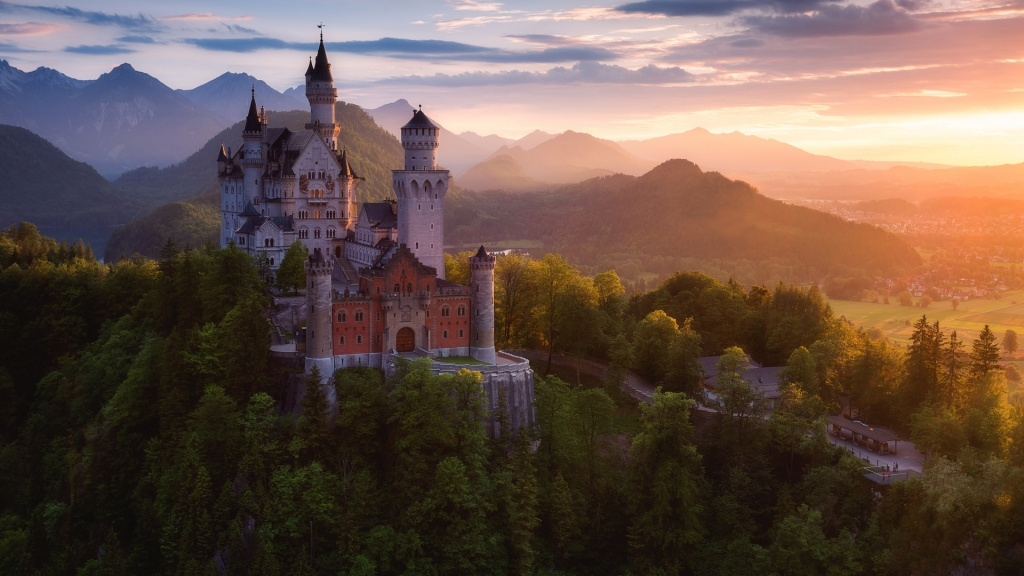
Neuschwanstein Castle (or Neustvayshtayn) - one of the most majestic and, at the same time, romantic buildings on German soil. It was built relatively recently - in the second half of the XIX century. This “brainchild” of the Bavarian king Ludwig II, erected on a rocky alpine slope, attracts travelers, lovers of antiquity and ... lovers like a magnet. The structure actually resembles a fairytale castle, where the princess is waiting for her prince. But the reality was much more prosaic: Ludwig II, weary of a strict court life, simply sought refuge for his dreamy soul. Although the king was engaged, he never married. According to some historians, he had a passion for people of his own sex. And the castle was not built for possible family life, and not even to demonstrate power, but only as a toy for the soul. And the king spent so much money on this toy that as a result he was declared insane and removed from power for squandering treasury.
Virtues
- From the castle grounds a magnificent panoramic view.
- The opportunity to climb to the castle on a carriage with horse cart.
- Nearby is a lake that inspired Tchaikovsky to write the ballet "Swan Lake".
- Affordable entrance fee (about 13 Euro).
disadvantages
- According to tourists, a short and not very interesting excursion program inside the castle.
- Additional costs (parking for a car, ascent to the castle by bus).
- Reconstructed, not all rooms are open to the public.
- A large number of tourists.
Eltz
Rating: 4.9
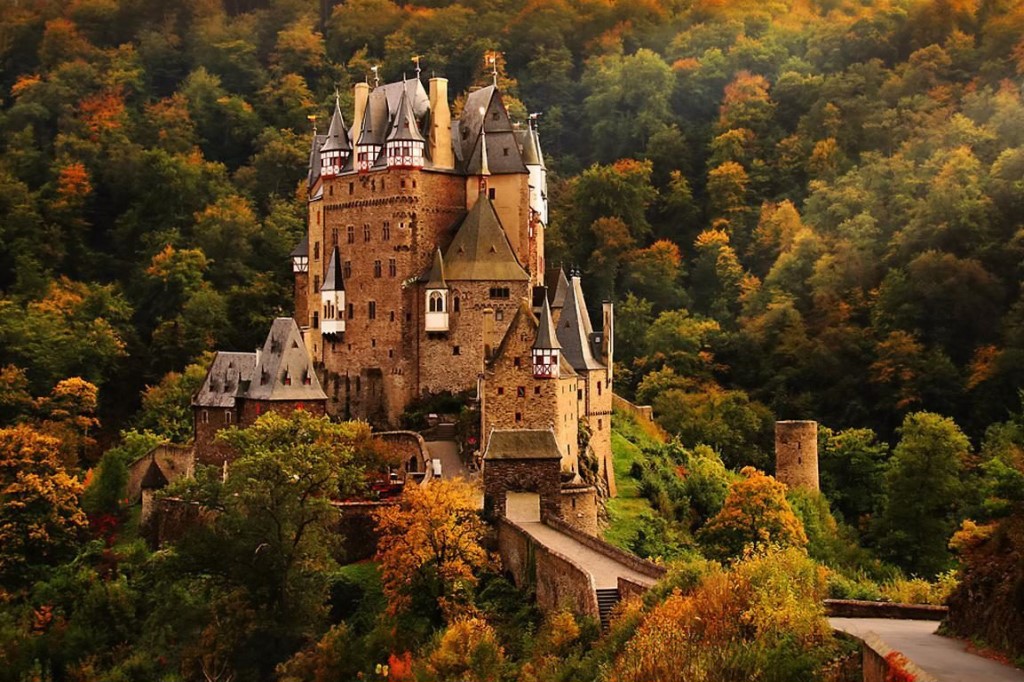
The Eltz Castle is one of the most popular tourist sites not only in Rhineland-Palatinate, but throughout Germany. This medieval structure has a happy fate: the castle was never captured by enemies, was not subjected to defeats. However, not all parts of the fortifications survive to this day. Something collapsed under the burden of time, and some buildings were destroyed by fire in the first half of the twentieth century. However, most of the castle structures were subsequently restored.
Eltz is attractive primarily for its unusual architecture. During the construction, the natural landscape was taken into account, so the castle complex is multi-level.
The castle is now privately owned. But given the high maintenance costs, the owner decided to open part of the premises for tourist inspection.
Virtues
- The original place - the construction is not visible from the road, the castle is supposedly hidden in the forest.
- Nearby there are two cafes.
- The staircase from the castle is equipped descent to the river.
- There are viewing platforms on the way to the sights.
- There is a museum of precious products and an armory.
- Loyal cost (10 Euro adult ticket plus 2 Euro bus fare to the castle).
disadvantages
- Sightseeing program only in German and English.
- Visiting is possible only as part of the excursion group.
- The ban on photographing inside.
- Quite a large distance from the parking lot (about two kilometers on mountainous terrain).
Wartburg
Rating: 4.8
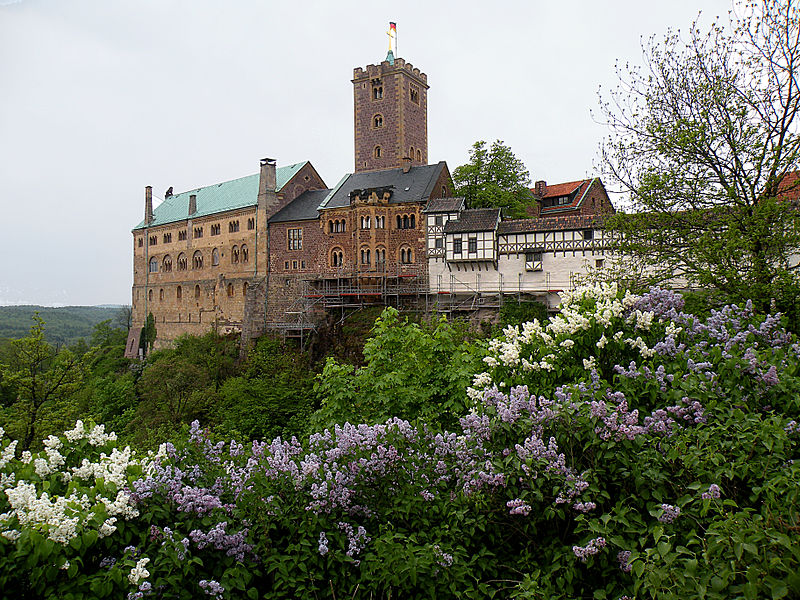
The Wartburg castle near Eisenach is a true German legend. And not only because the greatest composer, IS, was born in this town. Bach, Martin Luther was hiding and, it is claimed, held meetings of psychics and astrologers Hitler. A lot of mystical stories are connected with this place, and it is considered the most mysterious castle in Germany.
The first fortifications on the site where the Wartburg is now located were laid at the beginning of the second millennium. Subsequently, the castle complex was repeatedly completed and reconstructed. Only in the twentieth century were the interior walls decorated with tapestries, paintings, mosaics. But the structure of the interior has not been “redrawn” since the Middle Ages, and here the old atmosphere is really felt, despite numerous metamorphoses.
Virtues
- The beautiful location is in the Thuringian Forest, near Eisench (only half an hour on foot).
- An exhibition dedicated to Martin Luther was opened - it was here that the great preacher translated the New Testament.
- In the castle they hold concerts of classical music.
- There is a Russian audio guide.
- For children organized climbing to the castle on donkeys.
- You can buy souvenirs in the store.
disadvantages
- Inside you can only get with a guide.
- The ban on photographing and filming inside.
Hohenzollern
Rating: 4.8
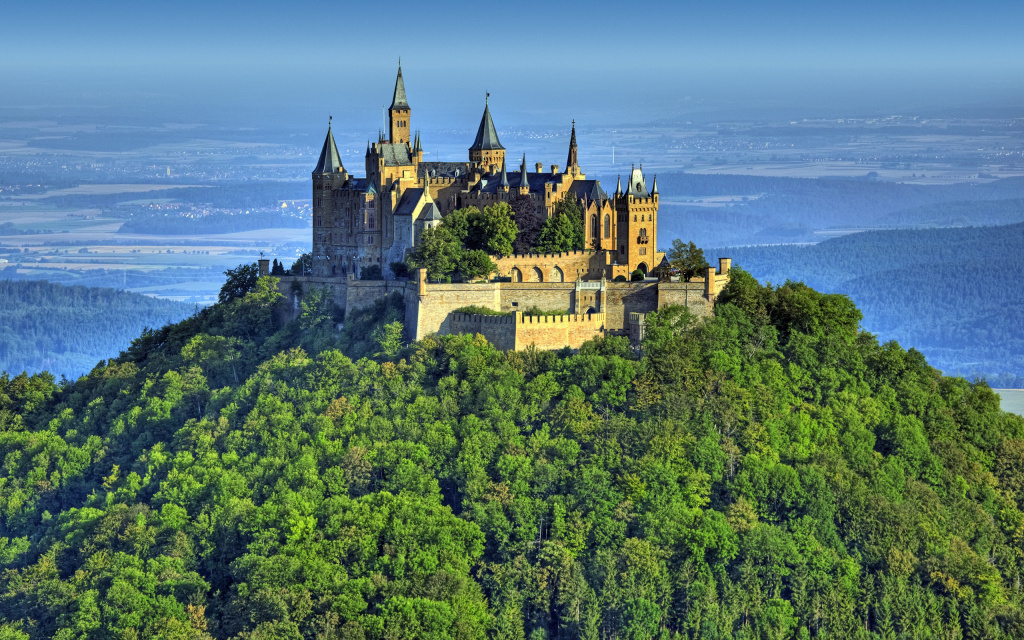
The Hohenzollern family nest is located not far from Tubingen on the top of a rather high mountain (855 m). Only 50 km separates this place from Stuttgart, so getting to the sights is not difficult.
The history of the “castle in the clouds”, as both Germans and numerous tourists call it, has more than a thousand years. The construction was completely rebuilt three times, and there was not even a trace of the original version. The kind that we can see now, Hohenzollen acquired only in the middle of the XIX century.
Inside the castle is no less beautiful than the outside. Antique furniture, paintings, tapestries - all this creates a feeling of special solemnity. In addition, there are many interesting artifacts. Among the exhibits are the crown of William II, the personal belongings of the royal dynasty and a letter of thanks from US President George Washington for help in the US war of independence.
Virtues
- From the top of the hill on which the castle is located, magnificent views open up.
- The museum is organized in the tower.
- There is a cafe where you can eat.
- Prices in the gift shop are quite reasonable.
- Affordable cost (with inspection of interiors - 12 Euro, without internal inspection - 7 Euro).
- The territory has a Catholic church.
disadvantages
- Part of the territory for access is completely closed (the castle is privately owned).
- Inside you can only get in the group.
- Ban on photo and video.
Stolzenfels
Rating: 4.8
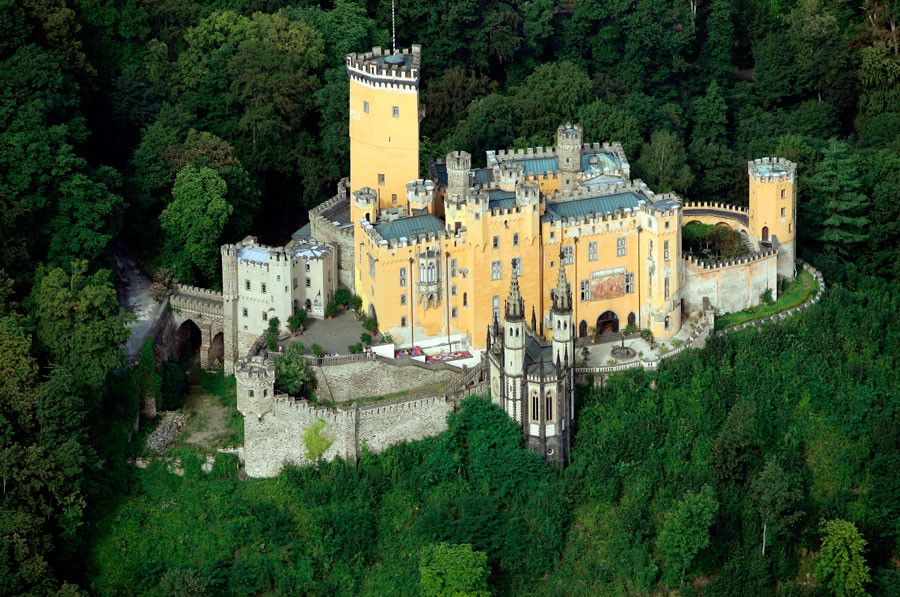
In 2002, Stolzenfels was included in the UNESCO World Heritage List.A magnificent example of romantic architecture, this castle attracts with its magnificent view. It rises on a small hill near the mouth of the Lana, which flows into the Rhine. This building was erected on the border of the Trier lands as a gateway to the region and customs. On the opposite bank, another castle was built for this purpose.
Stolzenfels was restored less than ten years ago, and the state allocated quite large funds (16 million Euros) for its restoration. As a result, it was possible to return the original appearance not only to the castle, but also to the park area.
A special feature of this attraction is the design of the halls. Each of them is stylized for a specific era. By the way, to avoid damage to the authentic flooring, the entrance inside is allowed only in slippers.
Virtues
- Convenient location (the castle is located near the city of Koblenz, from where it is easy to reach by bus).
- Original patio.
- An interesting collection of knightly weapons, armor, vintage cups.
- Very beautiful view of the Rhine (there is an observation deck).
- Cheap tickets (5 Euro).
disadvantages
- Visiting attractions only with a group.
- Tours are conducted only in English and German.
- Ban on photo and video.
- According to reviews of tourists, there are flaws in the organizational aspects.
Drachenburg castle
Rating: 4.7
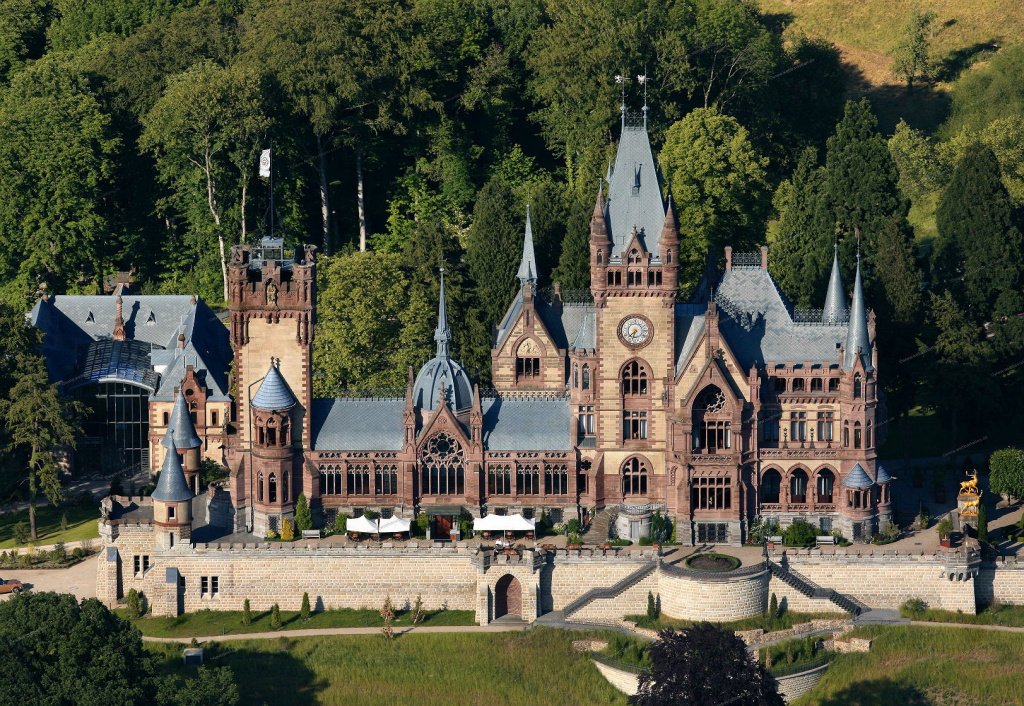
One of Germany’s largest palace buildings, Drachenburg Castle, is located in Westfalen. Among other castles, it stands out for its miniature size and rather young age - just a little more than a century. This sample of neo-gothic was built at the end of the 19th century by order of Baron Stefan Zarter. The construction lasted only three years, and three architects, 20 construction companies and a team of 20 artists working on interior design worked on the project. Interestingly, inside Drachenburg contrasts sharply with the appearance. If outside the castle looks like a typical medieval structure, then the most advanced achievements of that time are used in the interior and equipment.
After the death of Baron Zarter in the early twentieth century, his nephew, who acquired Drachenburg for a fabulous sum at that time, became the owner. To recoup the investment, he opened the castle for visits. At that time there was a hotel and a restaurant there. Later, Drachenburg served as a school, and during the war was severely destroyed. After a major reconstruction, a museum was opened here.
Virtues
- Affordable admission price (7 Euro).
- Well-groomed attractive area.
- Two viewing platforms.
- Photographing allowed.
- At the entrance you can personally make a commemorative coin.
- Open the entrance to the tower with a magnificent view of the surrounding countryside.
- Beautiful interior solutions.
- Nearby there is a cafe.
disadvantages
- Paid entry to the territory.
- Limited time of the lift.
- In winter, the castle is closed to the public.
Schwerin Castle
Rating: 4.7
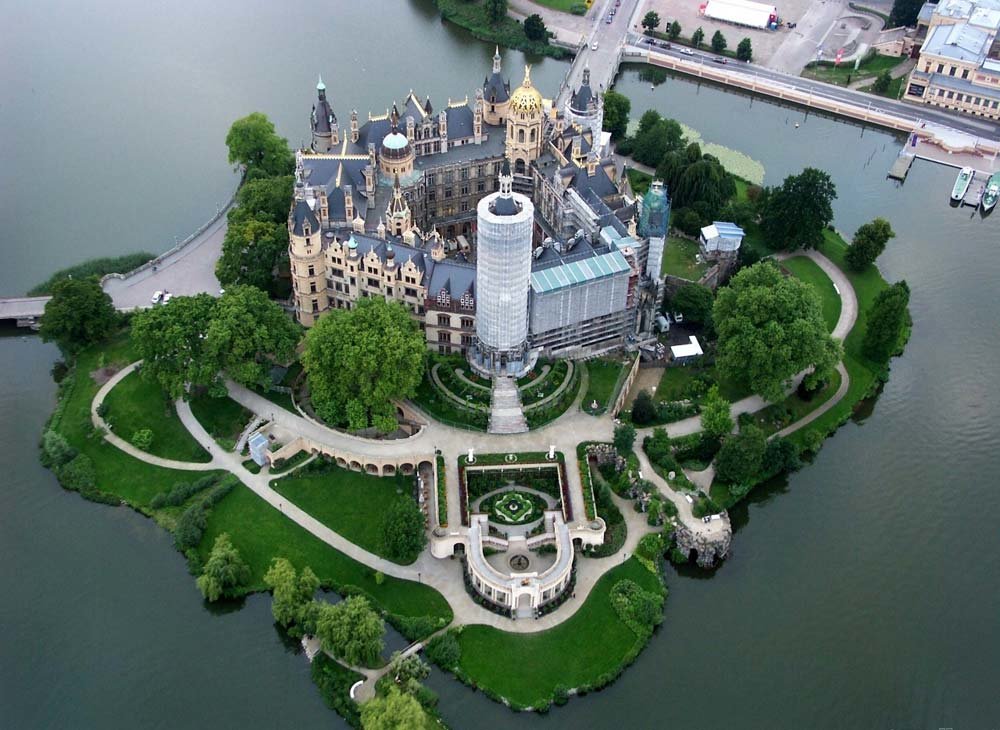
The castle in Schwerin is absolutely unique, and not only the location (this building was built on a small island). Its second feature is a mixture of styles that you will not find in any other German castle. There are closely intertwined many architectural areas: Gothic, Renaissance, Baroque, Classicism. But at the same time, the creators of this eclectic masterpiece managed to avoid dissonance. All elements look very harmonious, and the castle itself makes an unforgettable impression.
The official history of the castle dates back to the end of the 1st millennium, when a fort was built at this place. After some time, it was destroyed, and soon a new fortress was built. The structure was repeatedly subjected to reconstructions and modifications. The last cardinal reorganization dates back to the mid-19th century. It was at that time that the palace was built, designed by one of the most famous architects G. Demmler.
Virtues
- Luxury park Schlossgarten in the English style.
- Nearby there is parking.
- Affordable (entrance - 8.5 Euro).
- A rich collection of porcelain.
- Photo and video shooting is allowed (for an additional fee).
disadvantages
- Guided tours and other materials are available only in German and English.
- The “government” part of the castle is open to visitors only once a year.
Bloom
Rating: 4.7
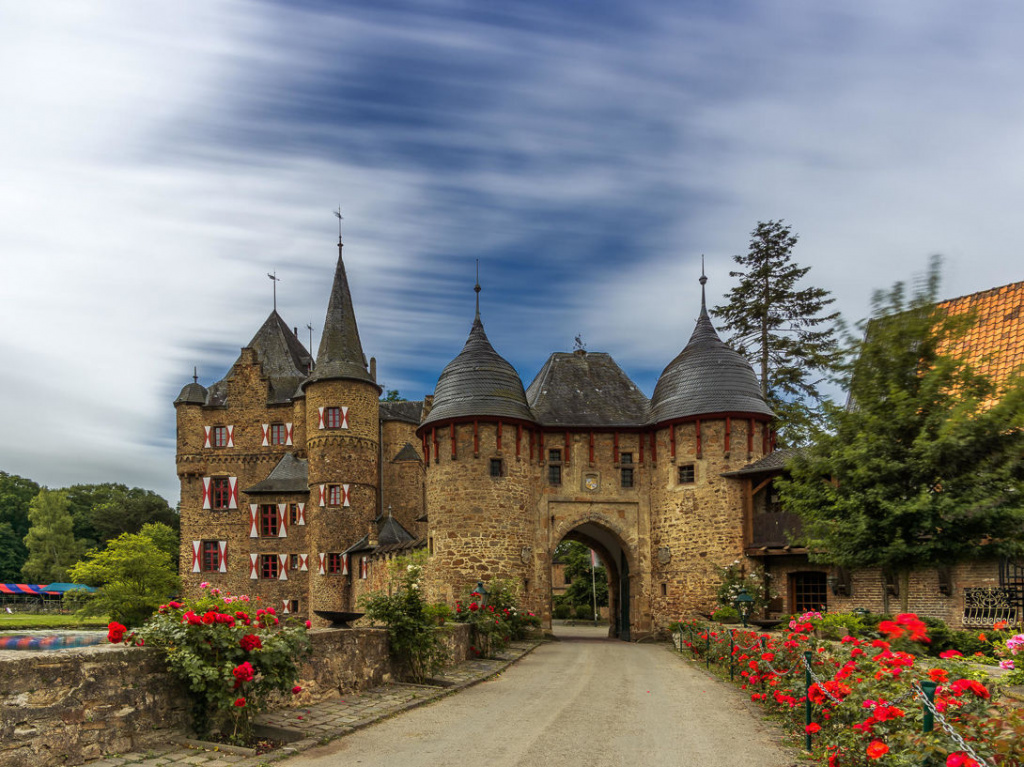
Castle Zatsvay - another fortification pearl of Germany, which should not be missed. According to legend, it was built by the knights who returned home from the Crusade. The first mention refers to the XII century. Zatsvay, in view of the flat landscape, was built on the island, where, besides the stone walls, the protective function was performed by water. However, this did not save the castle from numerous attacks. The last serious damage was caused during the Second World War, and the restoration took a lot of time and money. But the result was worth the effort: Zatsvay is one of the seven most beautiful private estates in Germany. For more than three hundred years he has been in the possession of a single family, and part of the castle premises are used for living. But since the maintenance of such a large estate is very expensive, the owners decided to make extra money on holding various events.
Virtues
- Numerous events are held - knightly tournaments, concerts, performances, shows, etc.
- Picturesque landscape design.
- For religious holidays (Christmas, Easter, St. Patrick's Day, etc.) organize bazaars, fairs.
- Convenient location (from Cologne can be reached by train).
disadvantages
- Relatively high prices.
Moritzburg
Rating: 4.7
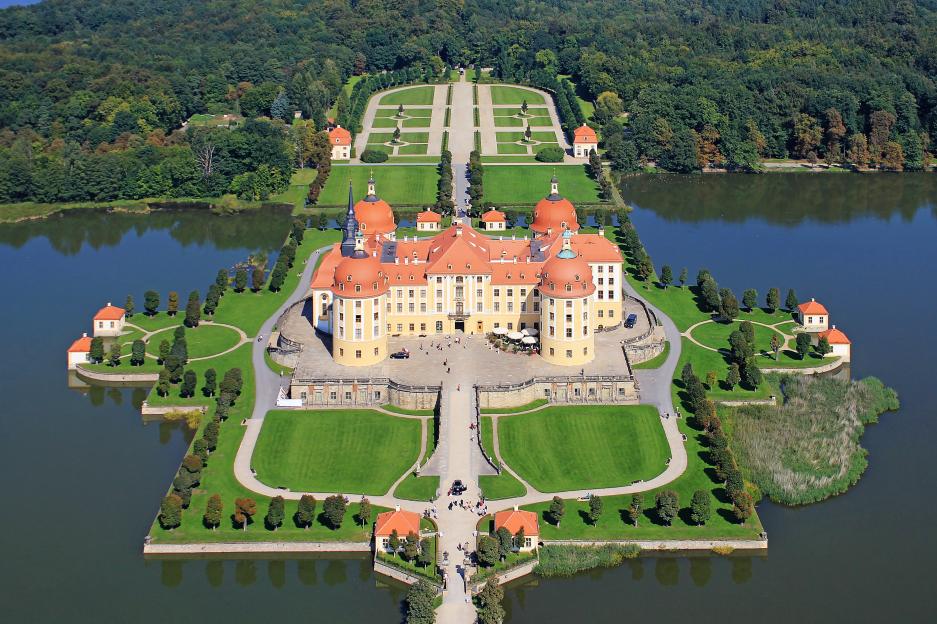
In the middle of the XVI century, the Duke Moritz von Sachsen decided to build a hunting lodge. They chose a successful place in the middle of a dense forest where there was a lot of game. Therefore, the house was never empty - representatives of the aristocracy and even crowned persons came here. And after almost two centuries, Augustus the Strong - the Polish king and Saxon kurfyust - wanted to make a residence here. As planned, the building was to be located on the water, so the palace was erected on an artificial island. In the second half of the XVIII century, great-grandson Augustus continued the transformation of Moritzburg. At that time, barracks, a sculptural complex and even their own "sea" were built - a huge lake with a pier and a lighthouse.
In private ownership of the castle was until 1945, and after the victory over Nazi Germany was withdrawn and became owned by the state. Many may recall Moritzburg from the fairy tale “Three nuts for Cinderella” - part of the film was shot on the territory of the castle. This episode in history is reminiscent of an iron slipper that tourists can try on and take pictures of.
Virtues
- Magnificent scenery.
- Original collections of dishes, clothes, baby strollers, etc.
- A large collection of deer antlers - the world's largest deer antlers are kept here.
- The unique “feather room”.
- Interesting "hunting" interiors inside.
- No difficulty with getting to - from Dresden to the castle can be reached by city bus.
disadvantages
- Inside shooting is prohibited.
Königstein
Rating: 4.6
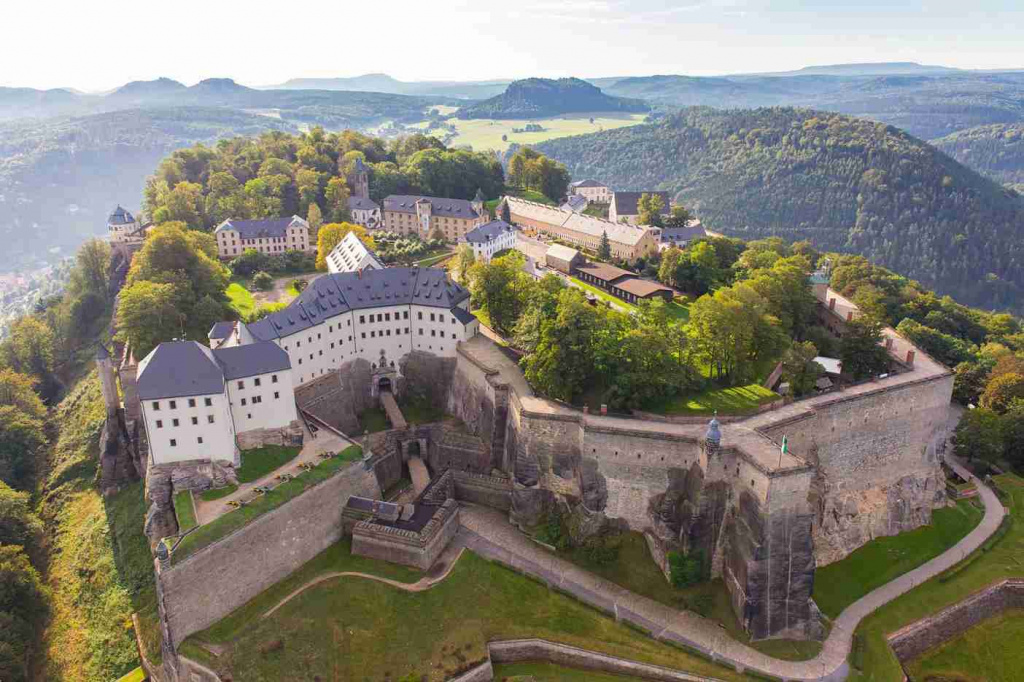
The small town of Königstein, near Dresden, owes its popularity, first of all, to the fortress. After all, it is considered her if not the most powerful, then definitely one of the most powerful in all of Europe. The first written mention of this fortification is dated to the XIII century, although it is known that in the XI century the fortress already existed.
With each change of owners, the appearance of the building also changed: the fortress was expanded, reconstructed, and modernized. The most ambitious plans for the restructuring of the fortress were at the Elector Augustus the Strong, who wanted to turn the medieval gloomy castle into a new-fashioned baroque structure. But, fortunately, these plans could not be realized, and tourists fall into the present Middle Ages. And among the distinguished guests who visited this famous German bastion, even Napoleon Bonaparte and Peter the Great are listed.
Virtues
- The Königstein Fortress is a kind of “city in the city”, where there is a temple, cafe, restaurant, tavern, bakery, casino, etc.
- Car parking at a very loyal cost (the first hour is free of charge, the next 4 hours is only 5.5 Euro).
- Audio guides and menus in the cafe are in Russian.
- In the winter discounts.
- Adequate admission price (8 Euro for adults, discounts for students and other categories of visitors).
- The presence of viewing platforms, balconies around the perimeter, from which a beautiful panorama.
- The deepest well in Saxony and the second deepest in Europe.
- Convenient transportation.
disadvantages
- High prices in catering establishments.
Marksburg
Rating: 4.6
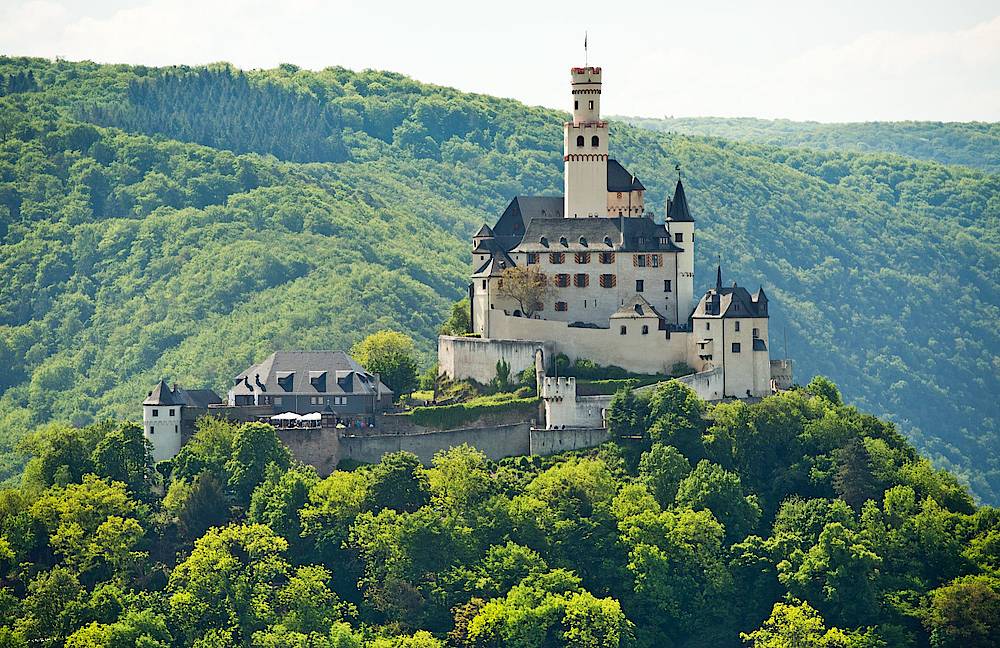
If you want to see what a real knight's castle looks like, then you should definitely visit Marksburg. This is the only fortress on the Rhine, almost completely survived and withstood all enemy attacks. However, in the history of the castle a lot of remarkable pages. When there was a prison, and a shelter for the disabled. But the rooms typical for medieval castles (the armory, the knight’s hall, secret passages, etc.) remained safe and sound.
The castle has a conical shape. It is erected on a hill, and so close to the edge that it is difficult to discern where the stone wall ends and the rock begins. The guardian of the castle is considered to be Saint Mark. From his name came the name of the fortress. In addition, several urban legends are associated with this saint. Residents of Marksburg are confident that the spirit of St. Mark has repeatedly appeared in the castle, and one of the tourists even managed to photograph the ghost.
Virtues
- From the castle offers a great view of the Rhine.
- Russian-speaking visitors are offered brochures describing the history of the castle.
- Organize various events.
- You can buy souvenirs in the shop.
- Works cafe.
- Free parking at the foot of the mountain.
- Photo and video shooting is allowed (including with flash).
- Almost all the rooms of the castle are open to the public.
disadvantages
- Entrance inside only with a guided tour.
- Almost all excursion programs are conducted in German (plus twice a day in English).
Cochem
Rating: 4.6
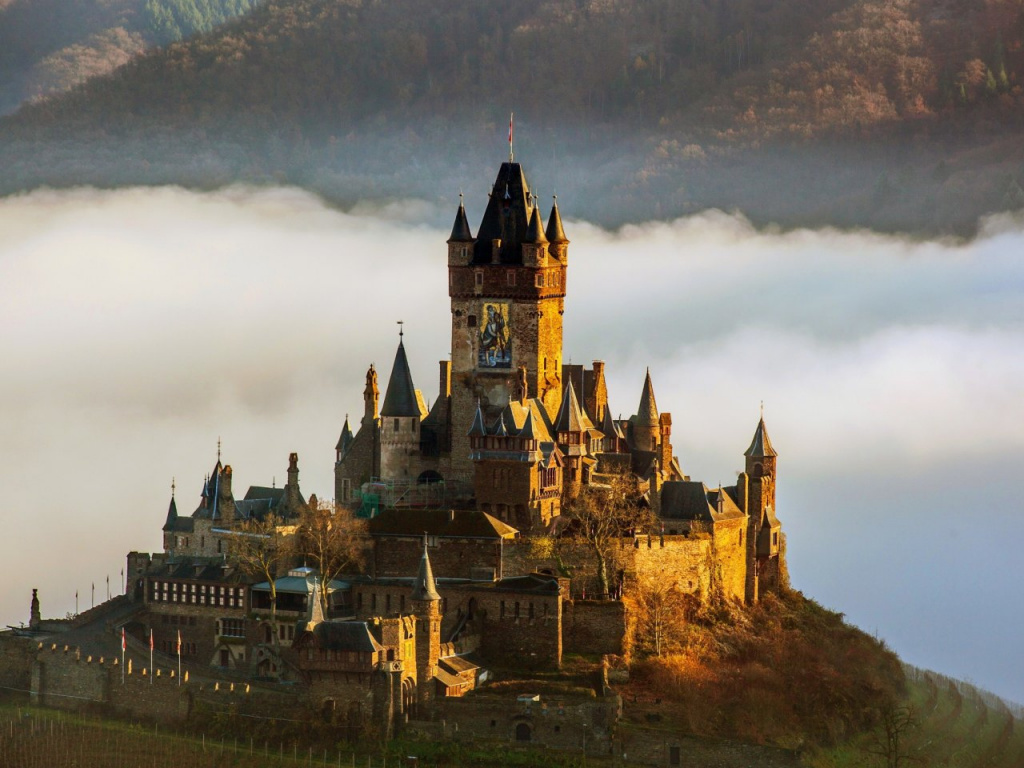
It is not known for certain when a castle was built in the small German town of Cochem. But already in the XI century. it is mentioned in documents, therefore 1020 is considered the approximate date of foundation. For hundreds of years, the castle passed from hand to hand until the king declared it imperial property in the middle of the XII century. From that moment, the real war began for Cochem. Even a hundred years later, by the decision of Emperor Charles IV, the city and the castle began to belong to the Archbishopric of Trier. Cochem began to perform the functions of the customs post. In the second half of the seventeenth century, the French, who occupied Cochem, destroyed part of the castle structures. For almost two centuries, the fortress stood in ruins until it was bought by Berliner Louis Revone. By his efforts the castle was restored.
The castle is located on a low hill directly in the city. From here there is a wonderful view of the city, the Moselle valley, the hillsides covered with vineyards.
Virtues
- The very beautiful and romantic castle chapel is one of the most popular wedding venues.
- There is a souvenir shop.
- Allowed photo and video.
- Free parking near the castle.
- Issued a newsletter in Russian.
- The castle rooms are decorated in various styles.
- Interesting menu in the restaurant.
disadvantages
- Entrance inside only with a tour group.
Albrechtsburg
Rating: 4.5
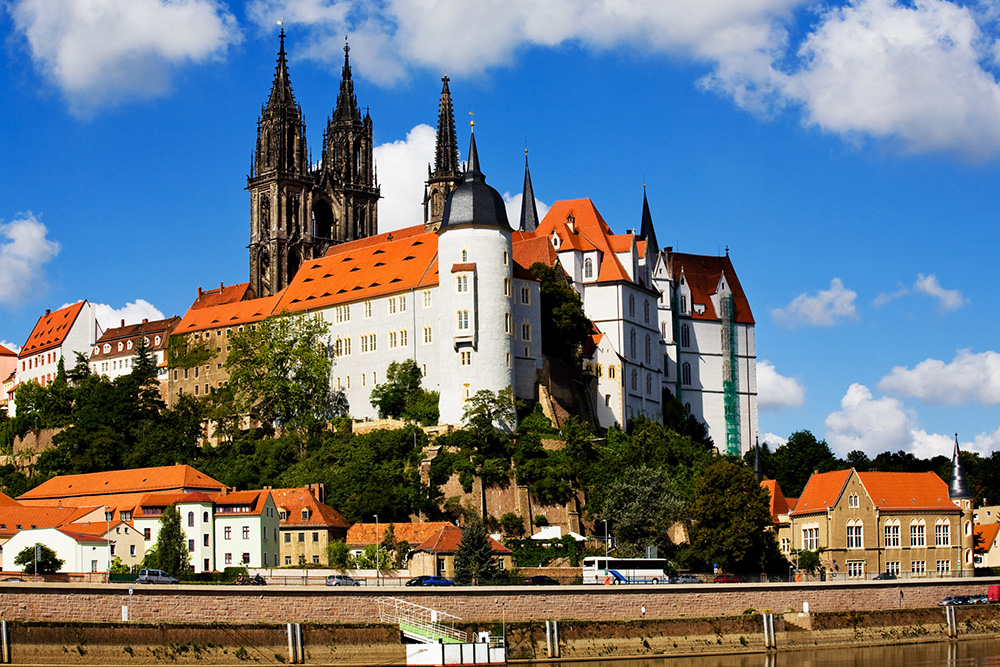
Albrechtsburg is the oldest castle-palace in Germany, whose history begins in the first half of the 10th century. Then a fortress was built here. In its place at the end of the XV century a new castle was built. This original architectural structure looks impressive even from a distance. It was originally planned to use the building as a residence, but in the castle they practically lived very rarely.Only one of the owners, Duke George the Bearded, occasionally stayed here.
The castle was empty until the beginning of the XVIII century, when Europe learned to make porcelain. It was then that the first European porcelain manufactory was opened in the castle. Here they made magnificent porcelain articles, thanks to which the Albrechtsburg castle, as well as the city of Meissen, where it is located, became world famous. When the manufactory was moved to another place, the castle became empty again, and at the end of the XIX century. a museum was opened here.
Virtues
- Perhaps a self-visit, without reference to groups and time limits.
- There is an audio guide in Russian (included in the ticket price).
- Detailed, interesting excursion.
- To the castle you can climb the funicular.
- Good location (25 km from Dresden).
- Two hours of free parking.
disadvantages
- A small assortment of souvenirs in the store.
- Inconvenient location of toilets (in the basement).
Kriebstein
Rating: 4.5
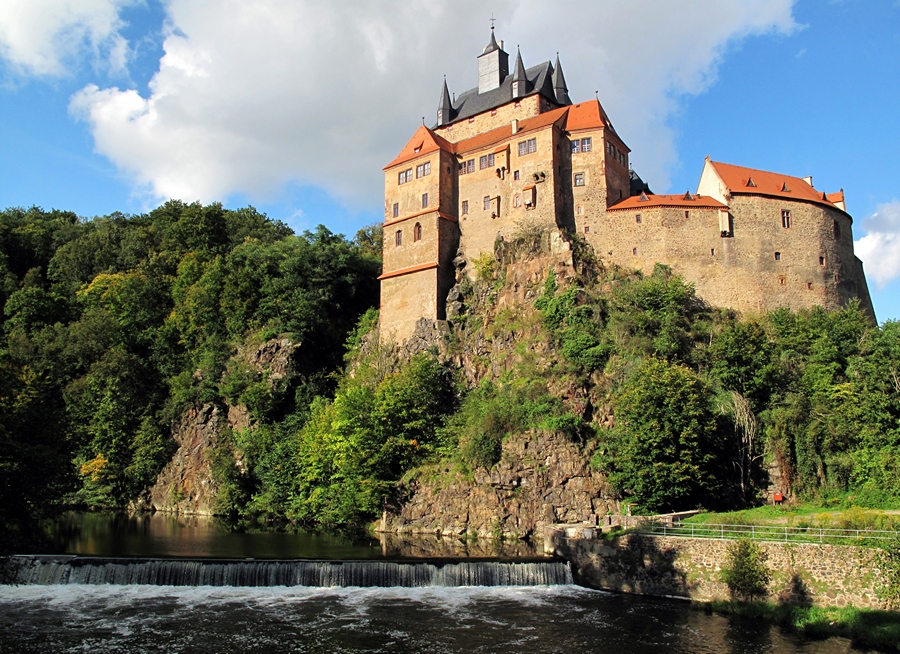
On the cliff above the river in Saxony stands the most beautiful castle of this region - Kriebstein. The picturesque panorama around, authentic architecture and interesting exhibits attract many tourists here.
From 1384, when the first stone was laid in construction, until 1945, when the castle was nationalized, many owners changed here. And although Kriebstein did not become the center of any grandiose historical events, his fate deserves attention. Almost each of the 30 owners made their own changes to the look of the castle, but what is very surprising, these reconstructions are almost imperceptible. The whole complex looks very harmonious and has not lost the gothic spirit. Perhaps this is one of the reasons why filmmakers like this place so much. Many films were made here, but the reality was no less exciting than the movie. During the restoration work carried out in 1986, a treasure was found in the castle with a huge amount of valuable things.
Virtues
- Almost all rooms are open for inspection.
- Self inspection is allowed.
- An excellent exhibition of weapons belonging to the owners of the castle.
- In the chapel of the 15th century, original wall paintings were preserved.
- The halls are stylized for different eras.
- Allowed to take pictures (for an additional fee).
disadvantages
- Little parking.
- Information materials only in German.
- Inspection of some parts of the castle is possible only as part of the excursion group (for example, the "Secret Room", the upper part of the residential tower).
Harburg
Rating: 4.5
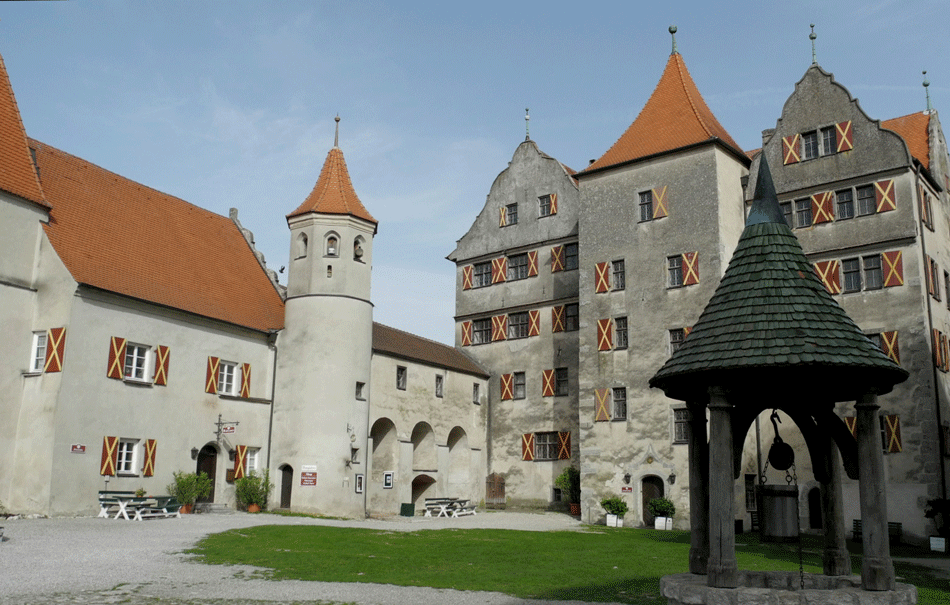
Castle Harburg - another "old-timers" among the German fortifications. His story begins in the XI century. Like many other castles, Harburg towers on a rock. But still it has a distinctive feature: inside the mountain passes a tunnel with a highway.
Despite the very old age, the castle is very well preserved. Here, firstly, there was not such a significant number of reconstructions and redevelopments, as in many other similar structures. And secondly, for many centuries, this is the property of a single family. From the 13th century to the present day, the Otburgen family owns the Harburg. As they say, at one time MacLe Jackson liked this castle so much that he wanted to buy it, but he did not manage to realize this dream. Harburg still receives tourists, and every summer there is a charity festival.
Virtues
- Fabulously beautiful panorama of the surroundings.
- The castle has a cafe and a hotel.
- Various events are held (festivals, concerts and even wedding ceremonies).
- Exposure of weapons and trophies.
- Decent collection of paintings.
- In one of the towers there was a prison and a torture room.
- Behind a massive wall with bastions there is a whole complex, including a temple, a house for servants, other buildings).
- Reasonable prices.
disadvantages
- Parking in the territory, according to some tourists, distorts the medieval atmosphere.
- Hotel amenities, according to some residents, leave much to be desired.
- The walking path around the castle walls is closed to visitors.
- Paid entry to the territory.
Attention! This rating is subjective, is not advertising and does not serve as a guide to the purchase. Before buying, you should consult with a specialist.


